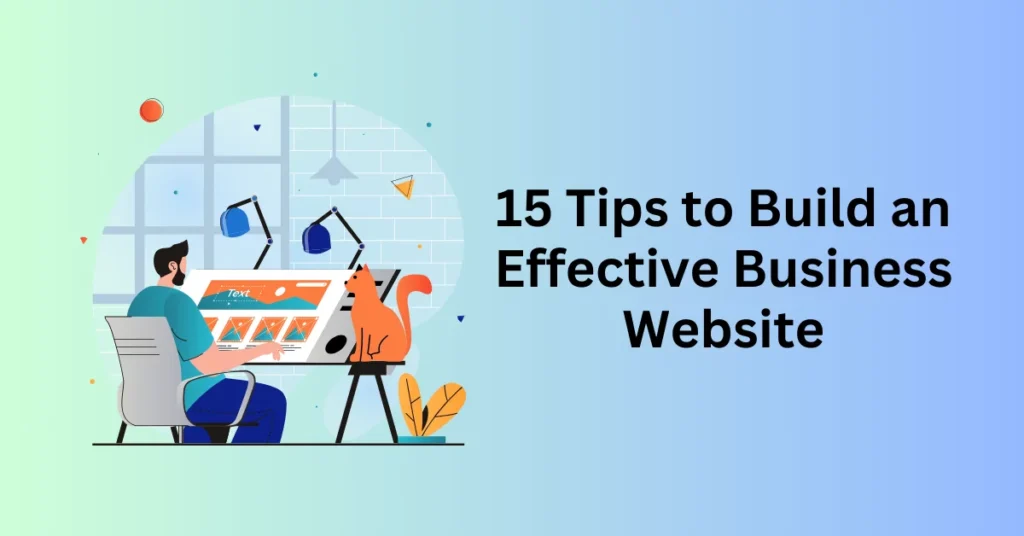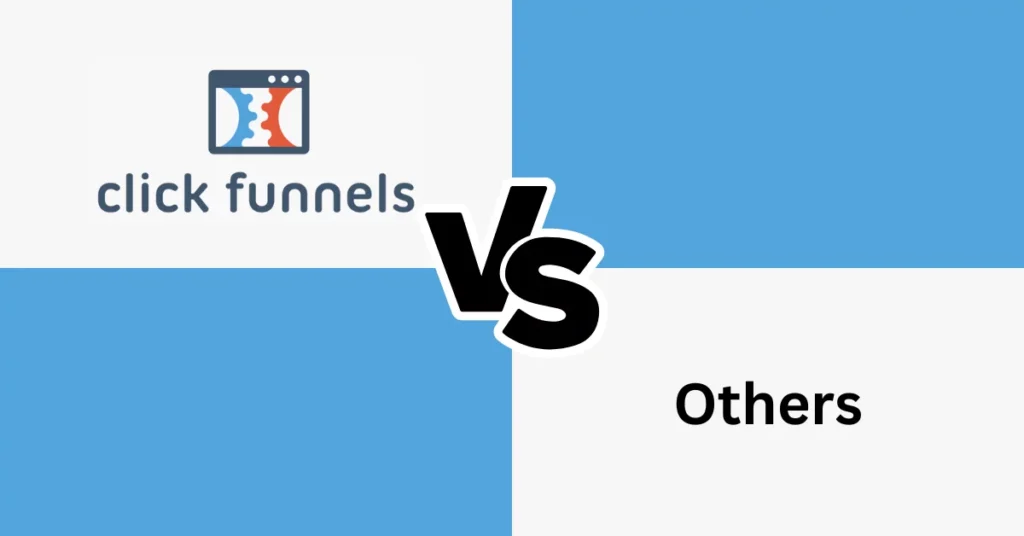In today’s digital landscape, having a well-designed, high-impact business website is essential for success. Whether you’re a small business owner, an entrepreneur, or a growing brand, your website is often the first impression potential customers will have of your business. A professional and strategically built site not only enhances credibility but also plays a key role in attracting, engaging, and converting visitors into loyal customers.
But how do you create a business website that stands out, functions seamlessly, and drives real results?
In this guide, we’ll walk you through 15 practical and effective tips to help you build a website that is visually appealing, user-friendly, and optimized for conversions. From choosing the right platform and domain name to improving website speed and SEO, these insights will set you on the path to online success. Let’s dive in!
Tip 1: Create a High-Converting Lead Magnet for Your Business
A strong lead magnet is essential for capturing potential customers and transforming them into loyal buyers. Whether you run a service-based business, sell digital products, or offer software solutions, the right lead magnet can be a game-changer in attracting leads and boosting conversions.

But what exactly makes a lead magnet effective? It’s not just about giving something away for free; rather, it’s about delivering real value and solving a specific problem for your audience. In the following sections, we’ll explore the best lead magnet strategies for different types of businesses and provide actionable insights to help you create one that exceeds expectations.
At its core, a lead magnet is a free resource or offer provided in exchange for a customer’s contact information, typically an email address. The key to success lies in ensuring that your lead magnet delivers a complete solution to a specific problem—rather than just a teaser or an excerpt of your paid product. By doing so, you build trust, demonstrate expertise, and increase the likelihood of converting leads into paying customers.
Best Lead Magnets by Business Type
1. Lead Magnets for Service-Based Businesses
If you offer a service, an effective lead magnet is something that allows potential clients to experience your expertise without a significant upfront investment. The goal is to introduce them to your services and encourage them to upgrade to a paid offering.
Examples:
- Dentists: Offer a free teeth cleaning session
- Massage Therapists: Provide a complimentary 15-minute massage
- Personal Trainers: Create a custom workout plan for free
💡 Pro Tip: Once a lead has claimed the free service, present an upsell such as a discounted package, membership, or a related paid service.
2. Lead Magnets for Digital Product Businesses
If you sell online courses, ebooks, or other digital products, your lead magnet should offer a preview of your expertise while solving a problem on a smaller scale. Instead of providing a snippet of your paid product, create something standalone and valuable.
Examples:
- Fiction Authors: Offer a free short story
- Non-Fiction Writers: Provide a free mini ebook or guide
- Online Course Creators: Share a free introductory lesson or video training
💡 Avoid Just Giving an Excerpt: An excerpt from a book or course may not provide a full solution, making it less compelling. Instead, create a lead magnet that is self-contained yet leaves your audience wanting more.
3. Lead Magnets for Software Businesses
For SaaS companies, free trials are a common lead magnet. However, free trials only work well for people already looking for your type of software. If your audience isn’t yet familiar with your solution, you need an educational lead magnet to bridge the gap.
Examples:
- Software Trials: Offer a 7- or 14-day free trial
- Educational Guides: Provide a free ebook explaining industry challenges
- Webinars: Host a live demo or training on how to solve a specific problem using your software
💡 Example from ClickFunnels: They offer a free trial of their funnel-building software, but they also provide educational content on sales funnels for those who are new to the concept. This helps nurture leads and move them toward a purchase.
One of the biggest mistakes businesses make is treating their lead magnet as an afterthought. Just because it’s free doesn’t mean it should be low quality. In fact, potential customers will judge your brand based on the quality of your free offer. If your lead magnet falls short, they’ll likely assume your paid products are of the same low standard.
To maximize conversions, your lead magnet should:
- Provide real value and solve a specific problem
- Be well-designed and look professional
- Leave your audience wanting more and ready to buy
Ultimately, a high-quality lead magnet is one of the most powerful tools you have for growing your email list and attracting paying customers. Whether you’re in the service industry, selling digital products, or running a software business, the key is to offer something valuable that builds trust and naturally leads to your paid offerings.
Tips 2: Build a Simple Sales Funnel That Converts
Now that you have a compelling lead magnet, the next step is setting up a simple yet effective sales funnel to convert leads into paying customers. A well-structured funnel guides potential customers through the buying journey, helping you nurture relationships and boost sales.
If you’re just starting, keep things simple with a three-step sales funnel:
Step 1: Create a High-Converting Lead Magnet Landing Page
Your landing page is where you present your free offer and collect email addresses. To maximize conversions, your page should include:
- A compelling headline that highlights the benefit of your lead magnet
- A clear, visually appealing call-to-action (CTA) to encourage sign-ups
- A short, persuasive description explaining why your lead magnet is valuable
- A simple opt-in form to capture email addresses
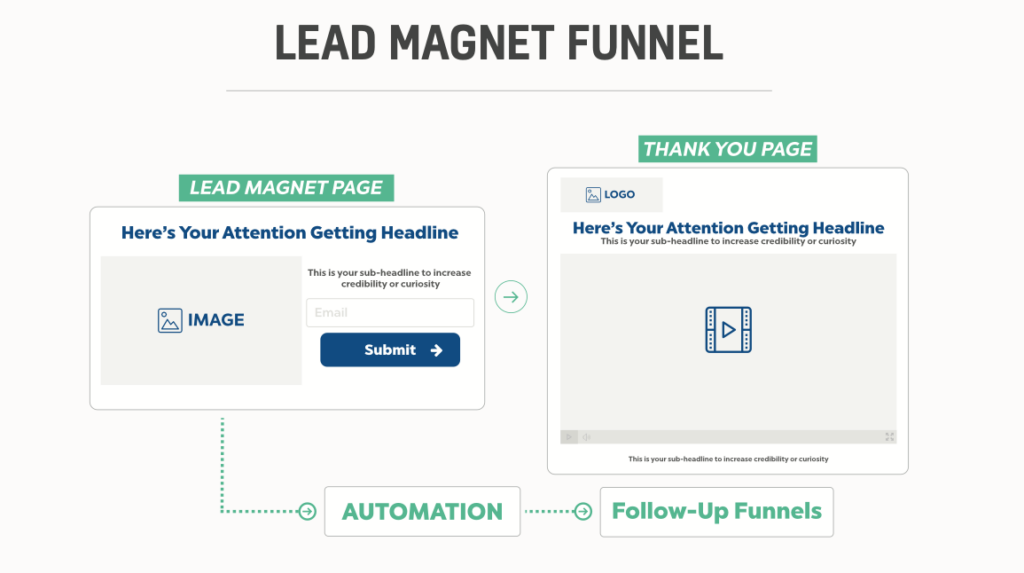
💡 Pro Tip: Keep your landing page clean and distraction-free. Avoid unnecessary links that could drive visitors away before they opt in.
Step 2: Set Up a Thank You Page
Once someone opts in, direct them to a thank you page where you:
- Confirm their subscription and thank them for signing up
- Provide instructions on how to access the lead magnet
- Introduce your paid offer as the next logical step
💡 Bonus Strategy: Add a limited-time discount or special offer on your thank you page to encourage immediate action.
Step 3: Design a Sales Page for Your Paid Offer
Your sales page is where you pitch your product or service. If you offer multiple products, start by promoting the most affordable or entry-level option. A well-optimized sales page includes:
- A strong, benefit-driven headline
- A clear explanation of how your product solves a problem
- Testimonials or case studies for social proof
- A bold, easy-to-find call-to-action (CTA)
💡 Pro Tip: Keep your messaging simple and focused. Don’t overload visitors with too many choices—guide them toward a single, compelling offer.
Once someone joins your funnel, nurture them with an automated email sequence. Here’s a simple 3-step email series to build trust and increase conversions:
- Welcome Email: Deliver the lead magnet, introduce your brand, and set expectations.
- Value Email: Share additional tips, insights, or a quick win related to your product.
- Sales Email: Present your paid offer with a compelling reason to buy now.
💡 Pro Tip: Use ClickFunnels or an email marketing tool to automate your sequence and engage new subscribers effortlessly.
Drive Traffic to Your Funnel
Once your funnel is live, start driving traffic with paid ads to test and optimize your strategy. The most effective platforms include:
- Facebook & Instagram Ads – Great for targeting specific demographics
- Google Search Ads – Ideal for reaching users actively searching for solutions
- Pinterest Ads – Effective for visually appealing products and blog traffic
(If you’re new to paid advertising, check out affordable courses on Udemy—you can often find top-rated courses for under $20 during sales.)
Your sales funnel helps you test your offer before investing in a full-scale website. Use this process to:
- See if your ideal customers are interested in what you’re selling
- Identify which parts of your funnel need optimization
- Generate leads and sales before expanding your marketing efforts
By starting with a simple funnel, you can fine-tune your strategy and ensure you’re on the right track before making bigger investments in your business.
Tip 3: Why a .com Domain Name is the Best Choice for Your Business Website
Now that you’ve made some sales with your funnel, it’s time to build a proper business website. And the first step? Securing the right domain name.
A .com domain is the most widely recognized and easiest to remember. It also carries a sense of credibility and professionalism, making it the best choice if you’re targeting a global audience.
However, if your business primarily serves a local market, using your country’s domain extension (like .co.uk for the UK or .ca for Canada) might be a better fit. Search engines also tend to favour country-specific domains for local searches, which can boost your SEO rankings within that region.
What If Your Ideal .com Domain Isn’t Available?
Since .com domains are in high demand, they can sometimes be expensive or already taken. But don’t worry—there are great alternatives available. Platforms like Namecheap offer a variety of domain extensions, including:
- .org (Great for nonprofits and community organizations)
- .net (Often used for tech-related websites)
- .io (Popular in the startup and tech space)
- .ai (A favourite among AI and machine learning businesses)
- .co (A sleek, modern alternative to .com)
- .dev (Ideal for developers and coding projects)
- .me (Great for personal brands and blogs)
If you want to get creative, you can also use country-specific domain hacks.
Before registering a domain, make sure to check if the extension has any restrictions—some country-based domains are reserved for local citizens or businesses.
Tip 4: Should You Invest in Dedicated Hosting?
Once your domain is secured, the next big decision is hosting. The two most common options are shared hosting and dedicated hosting—and choosing the right one can impact your website’s performance and security.
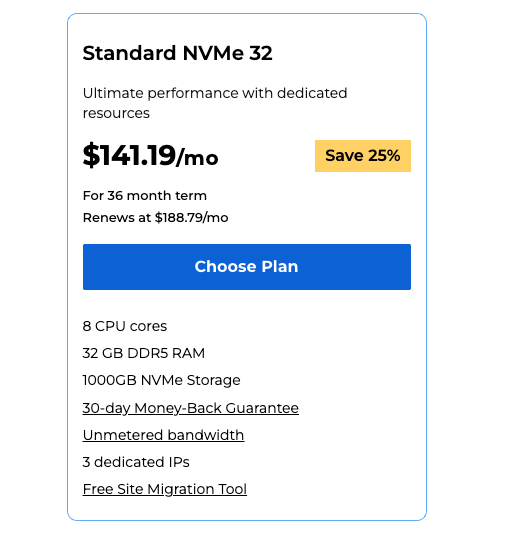
With shared hosting, your website shares a server with multiple other websites. This makes it the most affordable option, but it comes with drawbacks:
- Slower Load Times: Since multiple websites are pulling resources from the same server, your site may run slower, especially during high-traffic periods.
- Risk of Downtime: If another website on your server gets a traffic spike or a security issue, it can affect your site’s stability.
- Limited Customization: With shared hosting, you have fewer options to optimize your site’s performance.
If you’re serious about your business, dedicated hosting is a game-changer. With this option, you get an entire server to yourself, which means:
- Faster website speeds (critical for SEO and user experience)
- Better security (no risk of being affected by another site’s vulnerabilities)
- More control and customization (you can optimize the server for your needs)
While dedicated hosting is more expensive, the performance and reliability it offers can make a big difference—especially if you’re running an e-commerce site or a high-traffic business website.
Finding the Right Hosting Provider
If you’re just starting out and need a budget-friendly option, shared hosting with a reliable provider like Bluehost or SiteGround can be a good stepping stone. But if you have the budget, investing in dedicated hosting from companies like Kinsta, WP Engine, or Cloudways will give you a faster, more secure website in the long run.
Tip 5: Business Website Design Tips for Higher Conversions and Better User Experience
Building a website isn’t just about aesthetics—it’s about creating an intuitive experience that drives conversions. Whether you’re running an online business, a SaaS company, or an e-commerce store, your website should be designed with a clear purpose in mind.
One key principle to keep in mind is Jacob’s Law, a fundamental UX design concept that states:
“Users spend most of their time on other sites. This means that users prefer your site to work the same way as all the other sites they already know.”
In simpler terms, consistency is key. Visitors expect your website to function similarly to other sites in your industry. When your design aligns with these expectations, users can navigate your site effortlessly—resulting in better engagement and higher conversions.
For example, most SaaS websites follow a familiar pattern:
- Navigation bar at the top
- Call-to-action (CTA) button in the top-right corner
- Clear, concise homepage messaging
Following these industry norms isn’t about copying competitors; rather, it’s about creating a frictionless user experience that prevents visitors from bouncing and encourages them to stay engaged with your site.
Tip 6. Prioritize Conversions Over Aesthetics
Yes, a beautiful website is important—but not at the cost of conversions. While a poorly designed site can drive visitors away, an overly complex one can also distract users from taking action.
Your website’s primary goal should be to convert visitors into leads or customers. To achieve this:
- Use a clean, intuitive layout that guides users toward your CTA
- Stick to simple, readable fonts and a cohesive colour scheme
- Avoid excessive animations or unnecessary design elements that slow down load times
A great-looking website won’t help your business if it doesn’t drive results. Always prioritize conversion optimization over aesthetics.
Tip 7. Design Your Business Website Around a Single Conversion Goal
Your website should have one primary goal—whether it’s generating leads, getting free trial sign-ups, or driving product sales.
Think of it like this: All roads should lead to your conversion goal.
For example, if your goal is to get visitors to sign up for a free trial, every page should funnel users toward that action. This means:
- Placing clear CTAs throughout your site
- Minimizing distractions that take users away from your goal
- Eliminating unnecessary links or complex navigation paths
If your business model relies on booked consultations, then your website should be optimized to capture appointments. Whatever your primary conversion goal is, make sure everything on your website supports it.
Tip 8. Use a Proven Business Website Template for Faster Setup
Unless you’re a web design expert, building a site from scratch isn’t necessary. Instead, use a high-converting website template that’s already designed to maximize user engagement and conversions.
Many platforms offer customizable website templates, including:
- WordPress (with Elementor, Divi, or Astra themes)
- Shopify (for e-commerce businesses)
- ClickFunnels (for sales funnels and lead generation)
Using a proven template saves time and ensures that your website follows best practices for conversion-focused design.
Tip 9: Turn Your Business Website Homepage into a High-Converting Funnel
A homepage funnel is one of the simplest yet most effective ways to capture leads directly from your homepage. This streamlined process consists of three pages:
- Homepage: Feature a strong call-to-action (CTA) above the fold—meaning visitors see it immediately without scrolling. Your CTA should direct them toward your primary conversion goal, such as signing up for a freebie, booking a consultation, or starting a free trial.
- Pop-Up Opt-In Form: When visitors click your CTA, a pop-up form should appear, prompting them to enter their email address in exchange for something valuable (e.g., a free guide, discount, or webinar access).
- Thank You Page: After they opt-in, send them to a thank you page that confirms their action and guides them on the next step, such as checking their inbox or scheduling a call.
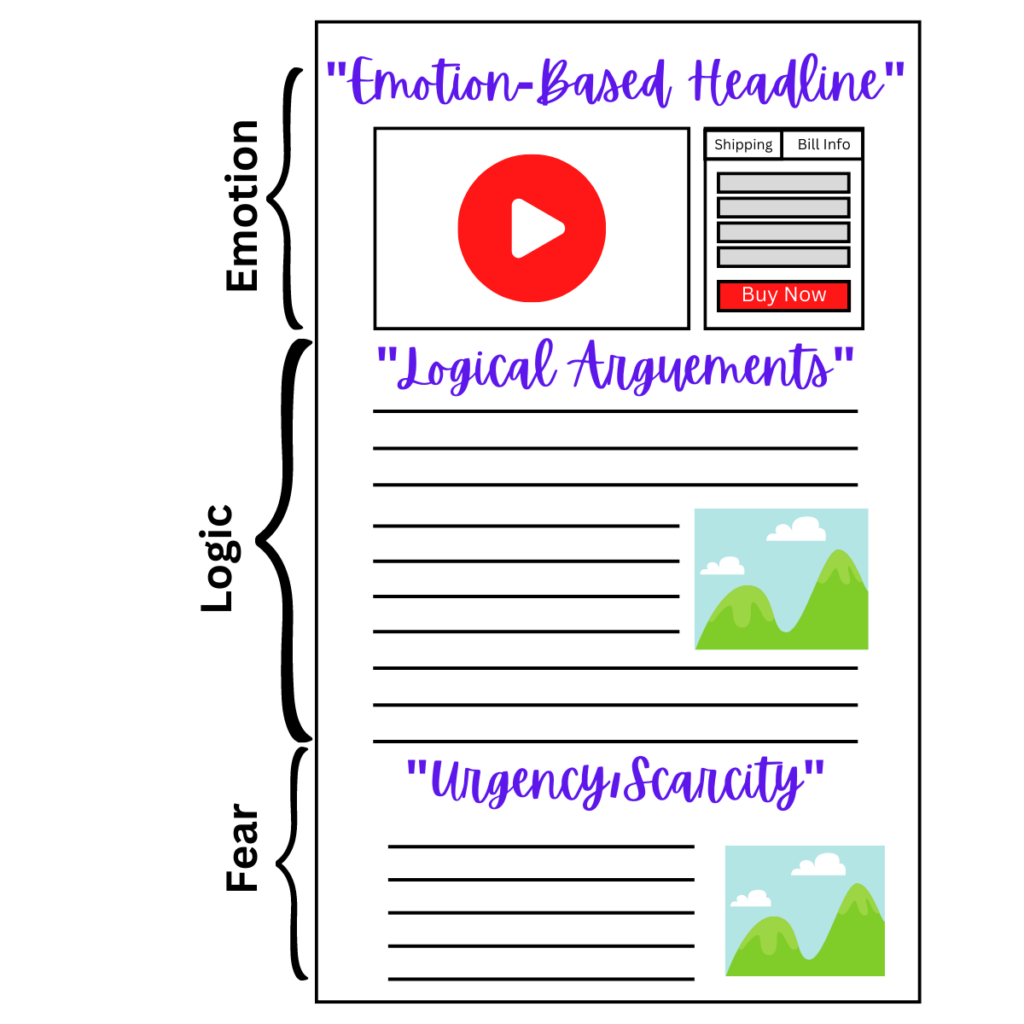
A homepage funnel makes lead generation seamless and automatic—and you can easily build one with tools like ClickFunnels, Leadpages, or Elementor.
Tip 10: Capture Attention with a Strong Value Proposition
Your homepage headline is the first thing visitors see, so it needs to immediately communicate your value. Instead of using technical jargon, craft a message that speaks directly to your audience’s pain points and desires.
Take inspiration from high-converting headline structures:
✅ Super Headline: Addresses a common problem your audience faces.
💡 Example: Struggling to Get a Constant Flow of Customers?
✅ Main Headline: Introduces your solution.
💡 Example: Meet ClickFunnels.
✅ Subheadline: Reinforces your message with a clear benefit.
💡 Example: Getting People to Your Website and Turning Them Into Happy Paying Customers Is What We Do Best.
Using multiple headline layers maximizes clarity and impact. More importantly, avoid complex industry terms—keep it simple so your message resonates with both beginners and experts.
Tip 11: Address Common Objections Upfront
Before committing to an offer, potential customers often have doubts or concerns. Instead of waiting for them to leave your site, address these objections right away—preferably above the fold.
For example, if you’re offering a software subscription, you might include:
- “Get Started in Less Than 60 Seconds” (Reassures users it’s quick and easy)
- “Cancel Anytime” (Eliminates fear of long-term commitment)
- “No Technical Skills Required” (Appeals to non-tech-savvy users)
- “Works for Every Type of Business” (Broadens relevance)
By tackling these objections early, you reduce hesitation and increase conversions.
Tip 12: Leverage Social Proof to Build Trust
People trust businesses that have credible endorsements. That’s why social proof—such as customer testimonials, case studies, and reviews—is one of the most powerful conversion boosters.
Here’s how to strategically use social proof on your site:
- Customer Testimonials – Feature real success stories to build credibility.
- Case Studies – Showcase data-driven results from happy clients.
- Trust Badges & Ratings – Display logos of media mentions, certifications, or verified reviews.
- User-generated Content (UGC) – Highlight social media posts or video reviews from customers.
The key? The more social proof, the better—unless it becomes a distraction. If you don’t have any testimonials yet, make it a priority to collect and display them prominently on your site.
Tip 13: Use Heatmap Software to Track User Behavior
You might think your website is intuitive, but what truly matters is how users actually interact with it. Some design choices that make perfect sense to you might be confusing or frustrating to your visitors.
That’s where heatmap software becomes invaluable. It provides actionable insights into:
- Hotspots – Discover which elements draw the most attention and where users focus their energy.
- Click Tracking – Identify where users are clicking (or, just as importantly, where they aren’t).
- Scroll Depth – See how far down users scroll before losing interest or leaving the page.
By analyzing these heatmaps, you can make informed decisions to optimize your page layouts, improve navigation, and eliminate friction points. This leads to higher engagement and, ultimately, better conversions. Popular heatmap tools like Hotjar and Microsoft Clarity can help you gain a clearer understanding of how users engage with your site, paving the way for improvements that drive success.
Tip 14: Run A/B Tests to Optimize Conversions
Want to know exactly what works best on your website? A/B testing (or split testing) is the answer.
Here’s how it works:
- Create two versions of a page that differ by only one element (such as a headline, button colour, or CTA placement).
- Send equal traffic to both versions.
- Measure which version performs better in terms of conversions.
A/B testing can be used for:
- Headlines & Copywriting – Which message resonates more?
- Call-to-Action Buttons – Does “Get Started” or “Sign Up Free” convert better?
- Colours & Layouts – Do contrasting colours boost engagement?
While a single test may not yield huge results, consistent testing adds up over time, leading to massive improvements in conversion rates. The key is to adopt the “Always Be Testing” mindset. You can easily run A/B tests using tools like Google Optimize, Optimizely, or VWO.
Tip 15: Ensure Your Business Website Complies with Online Privacy Laws
Ignoring privacy laws can lead to legal trouble, fines, or even getting blocked in certain regions. As data regulations evolve, compliance is no longer optional—it’s a must.
- U.S. Regulations – Various federal and state laws govern data collection, security, and user rights.
- GDPR (Europe & UK) – The General Data Protection Regulation (GDPR) mandates strict data privacy and transparency laws for companies operating in the EU and UK.
- Global Privacy Laws – Many countries in Asia, Africa, and South America have adopted similar regulations.
If you’re collecting user data, ensure your website has:
- A clear privacy policy
- Cookie consent banners (where required)
- Opt-in & opt-out options for data collection
For businesses operating internationally, consulting a privacy law expert is highly recommended to avoid legal pitfalls.
Final Thoughts: 15 Tips to Build an Effective Business Website
Creating a high-impact business website is more than just a design project—it’s an investment in the future of your brand. To achieve success, you need to focus not only on aesthetics but also on functionality. By following these 15 tips, you’ll not only craft a professional and visually appealing site, but more importantly, you’ll ensure that it performs effectively, delivers value to your visitors, and drives business growth. After all, your website should be a true reflection of your brand’s values, goals, and commitment to customer satisfaction.
As the digital world continues to evolve, your website must evolve with it. This means staying updated on the latest trends, continuously optimizing for performance, and adapting to user feedback. By doing so, you can keep your site relevant and effective in an ever-changing online landscape. With the right strategies in place, your website can become a powerful tool that propels your business to new heights.
So, are you ready to build a website that truly represents your brand? If so, start implementing these tips today, and watch as your online presence grows stronger than ever!
